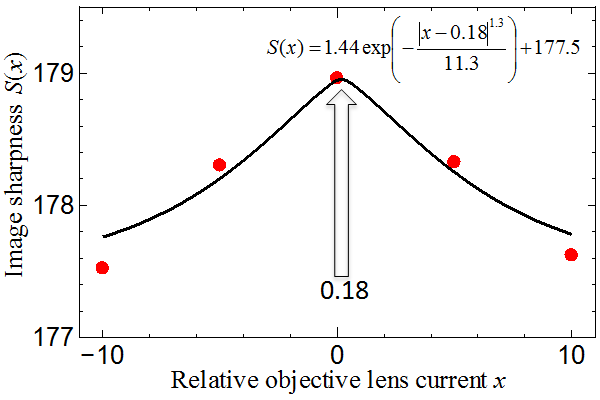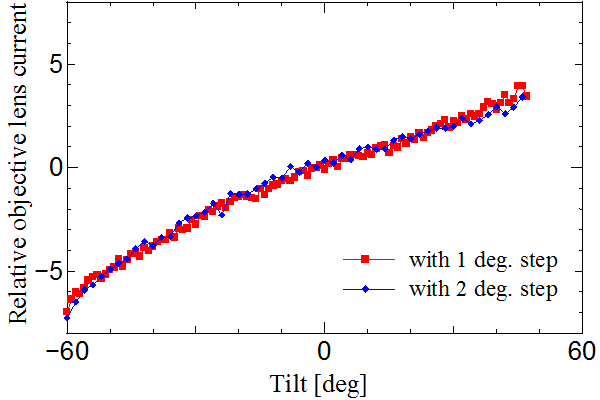IT-10-P-2985 Autofocus method with high-definition TV camera for ultrahigh voltage electron microscope tomography
The 3 MV ultra-high voltage electron microscope (UHVEM) H-3000 at Osaka University has capability of observation for micrometers' thick-sliced biological samples. This fea¬ture is suitable for tomographic three-dimensional imaging [1]. While taking obtain a tilt series of electron tomography, acquiring a hundred images, their image position and focus must be accurately aligned automatically. We proposed the Auto-Focus system using image Sharpness (AFS) [2] is suitable for acquisition of UHVEM tomography series [3]. The method is that values of image sharpness corresponding to defocus values become to be maximized as shown in Fig.1. To find the maximized image sharpness, we use fitting five points with a different defocus value to quasi-Gaussian function [3]. Acquisition of images by the slow scan CCD (SS-CCD) camera is good image quality but the acquisition time is taken more than one minute for one autofocus operation getting five defocused images.
In this study, we use a high-definition TV camera (HDTV camera; effective image area is 1.2k × 1k size) instead of the SS-CCD camera (4k × 4k) for fast acquisition of images. The HDTV camera captures one image for only 1/30 second. However, S/N of the image and the resolution are lower than the SS-CCD camera. To improve poor S/N, we integrated the images for 22 frames so that each image sharpness is enough to fitting. For lower resolution than SS-CCD image, we selected the defocus step made to be larger to discriminate difference of sharpness with each defocused image. By using HDTV camera for autofocus process, it took 6 seconds during one autofocus procedure, which became shorter by one order. It took 30 seconds to record one image by SS-CCD after autofocus and position alignment. We can obtain the series of 61 images during 30 minute. So, we successfully decreased total acquisition time of tomography series in half.
[1] A. Takaoka, et al, Ultramicroscopy 108 (2008) 230-238.
[2] H. Inada, et al, Proc. of 8APEM (2004) Kanazawa, Japan, 60-61.
[3] R. Nishi, et al, Microscopy 62(5)(2013) 515–519.
This work was supported by the Ministry of Education, Culture, Sports, Science and Technology (MEXT), Japan, under a Grant-in-Aid for Scientific Research (Grant No. 23560024, 23560786).

